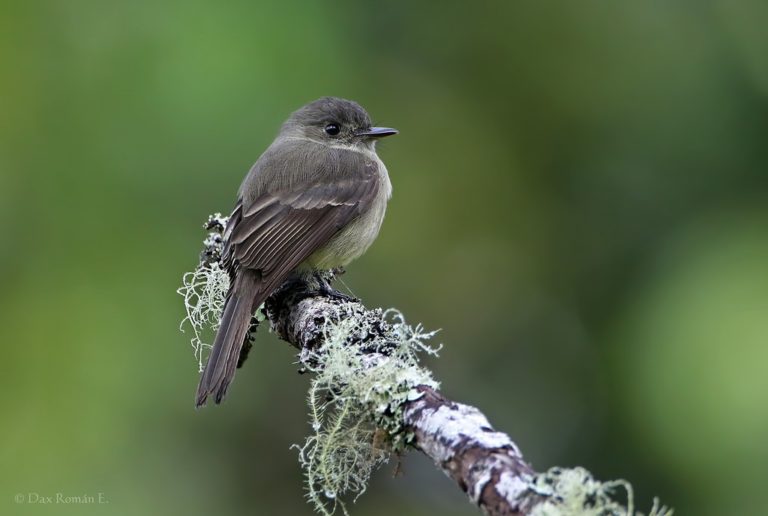Birdfinding.info ⇒ Easy to find at wooded sites in the southwestern and central D.R., such as Alcoa Road, Los Arroyos, Zapotén, Cachote, the Rabo de Gato Trail, El Valle National Park, and Ébano Verde Scientific Reserve. In the eastern D.R., can generally be found in tracts of intact forest habitat, such as Los Haitises and Del Este National Parks and the Punta Cana Ecological Reserve.
Hispaniolan Pewee
Contopus hispaniolensis
Family: Tyrannidae
Endemic to Hispaniola and Gonâve, where it is widespread and generally common in forests, open woodlands, and tall scrub at all elevations.
Identification
A small, nondescript, drab, olive-gray flycatcher with very faint wingbars and no noticeable facial markings.
Proportionately short-winged and long-tailed, with a plump body and big head.
The bill is fairly long and mostly blackish—though the underside of the lower mandible is paler.

Hispaniolan Pewee. (Rabo de Gato Trail, Dominican Republic; April 11, 2015.) © Alan Van Norman
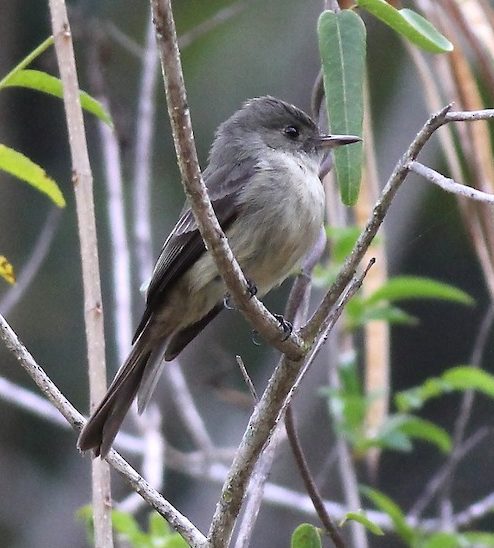
Hispaniolan Pewee. (Rabo de Gato Trail, Dominican Republic; March 17, 2015.) © Jason Leifester
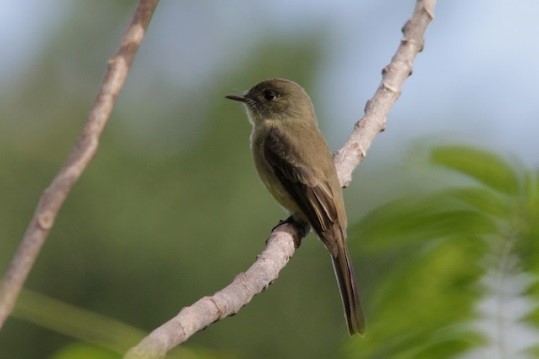
Hispaniolan Pewee. (Zanglais, Haiti; December 13, 2017.) © Richard Dunn
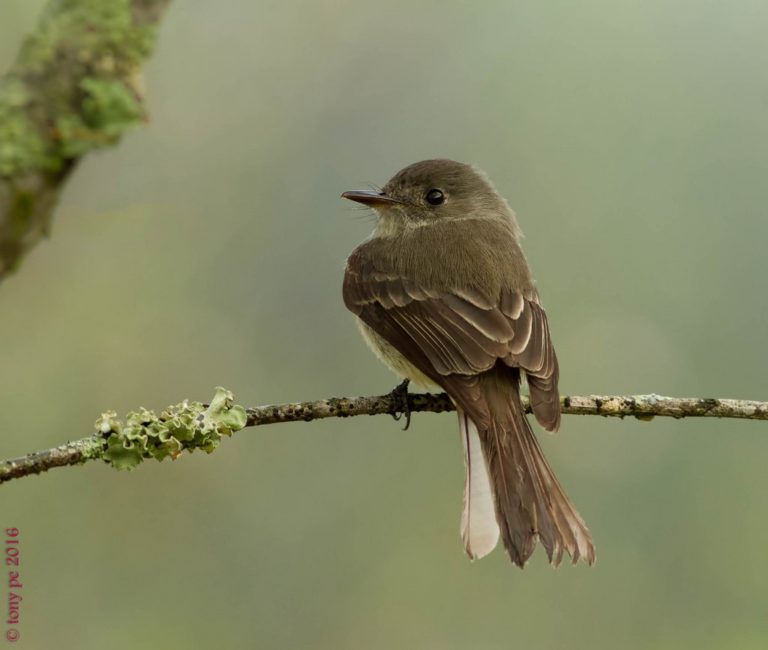
Hispaniolan Pewee. (Cordillera Central, Dominican Republic; January 21, 2016.) © Tony Pe
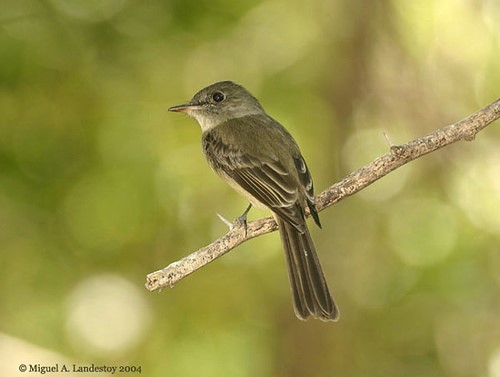
Hispaniolan Pewee. (Dominican Republic; 2004.) © Miguel A. Landestoy T.
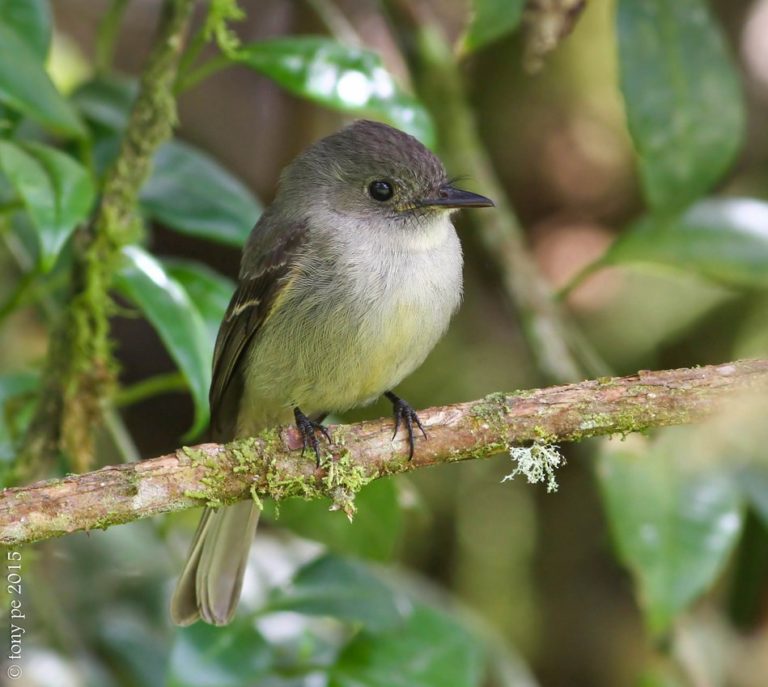
Hispaniolan Pewee. (Sierra de Bahoruco, Dominican Republic; February 27, 2015.) © Tony Pe
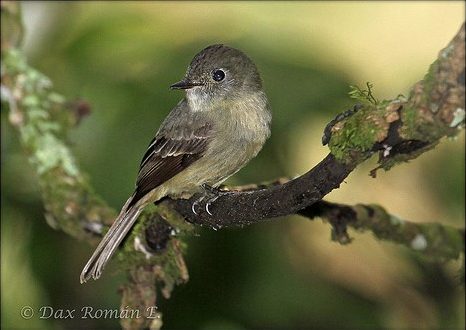
Hispaniolan Pewee. (Dominican Republic; November 26, 2011.) © Dax M. Román E.
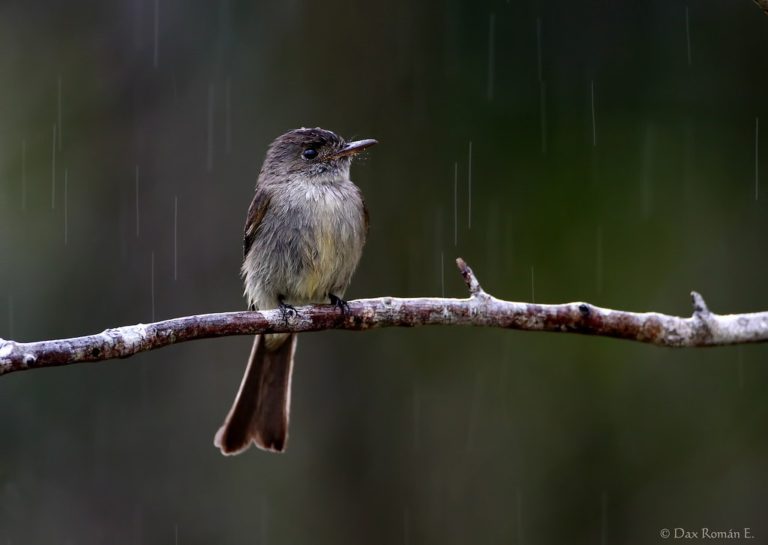
Hispaniolan Pewee, showing deeply notched tail. (Ébano Verde Scientific Reserve, Dominican Republic; February 1, 2014.) © Dax M. Román E.
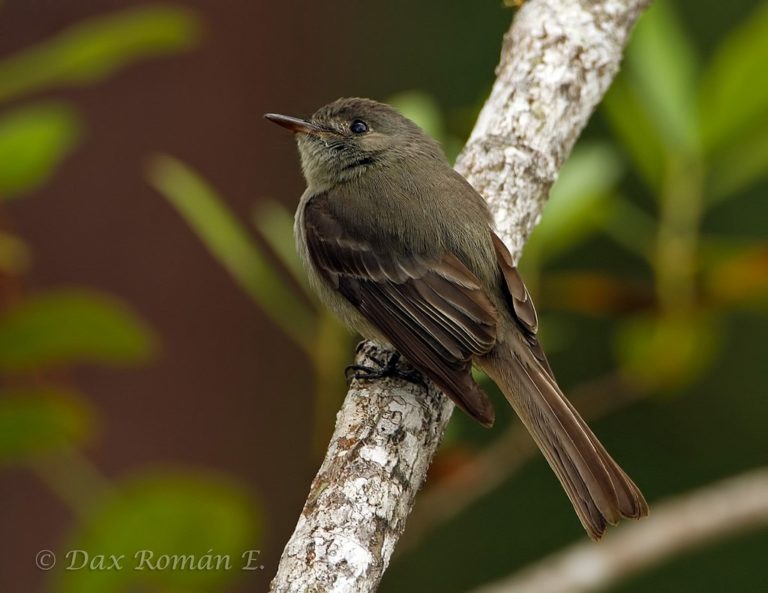
Hispaniolan Pewee. (Zapotén, Dominican Republic; February 16, 2013.) © Dax M. Román E.
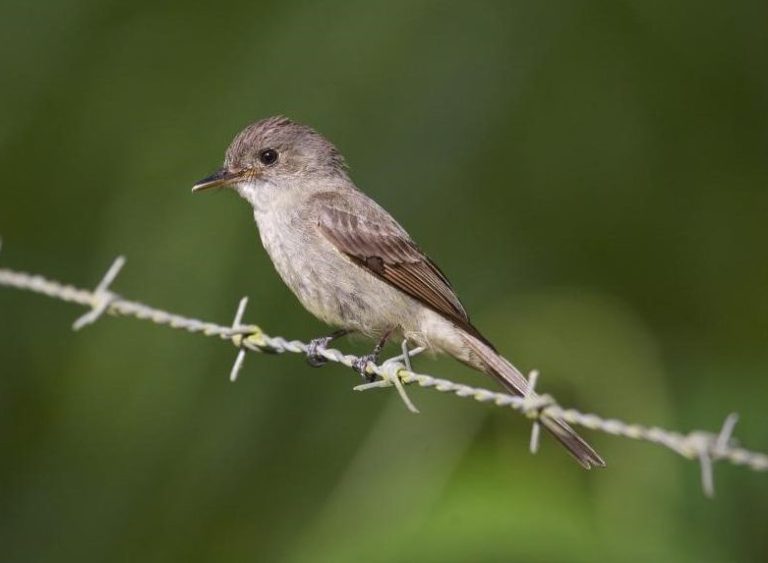
Hispaniolan Pewee. (Piedra Blanca, Dominican Republic; June 21, 2013.) © mjw246
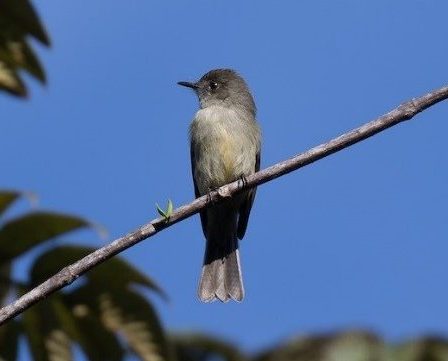
Hispaniolan Pewee. (Ébano Verde Scientific Reserve, Dominican Republic; January 15, 2018.) © Simon Best
Voice. Often gives a perky pip-pip-pip-pip-pip-pip-pip series (of varying length) followed by an upslurred whe-e-e-p!
Other calls include isolated pip notes, excited pip-pip-pip-pip-pip series of varying lengths, and isolated whe-e-e-p! whistles:
The dawn song is described as “a loud, rapid-fire volley of short notes, shur, pet-pet, pit-pit, peet-peet, with the paired syllables rising in pitch.” (Latta et al. 2006)
Cf. Hispaniolan Elaenia. Hispaniolan Pewee and Hispaniolan Elaenia are drab flycatchers that often occur together. Compared to the pewee, the elaenia has strongly marked wings, including distinct wingbars, and is differently proportioned, with a proportionately larger body, smaller head, and shorter bill.
Cf. Migrant Flycatchers. Hispaniolan Pewee is potentially mistaken for some North American migrant species that are very rarely recorded from Hispaniola, such as Eastern Wood-Pewee and certain Empidonax flycatchers, but these vagrants have prominent wingbars.
Notes
Polytypic species consisting of two recognized subspecies: hispaniolensis (Hispaniola) and tacitus (Gonâve).
References
eBird. 2019. eBird: An online database of bird distribution and abundance. Cornell Lab of Ornithology, Ithaca, N.Y. http://www.ebird.org. (Accessed February 18, 2019.)
Latta, S., C. Rimmer, A. Keith, J. Wiley, H. Raffaele, K. McFarland, and E. Fernandez. 2006. Birds of the Dominican Republic and Haiti. Princeton University Press, Princeton, N.J.
Raffaele, H., J. Wiley, O. Garrido, A. Keith, and J. Raffaele. 1998. A Guide to the Birds of the West Indies. Princeton University Press, Princeton, N.J.
